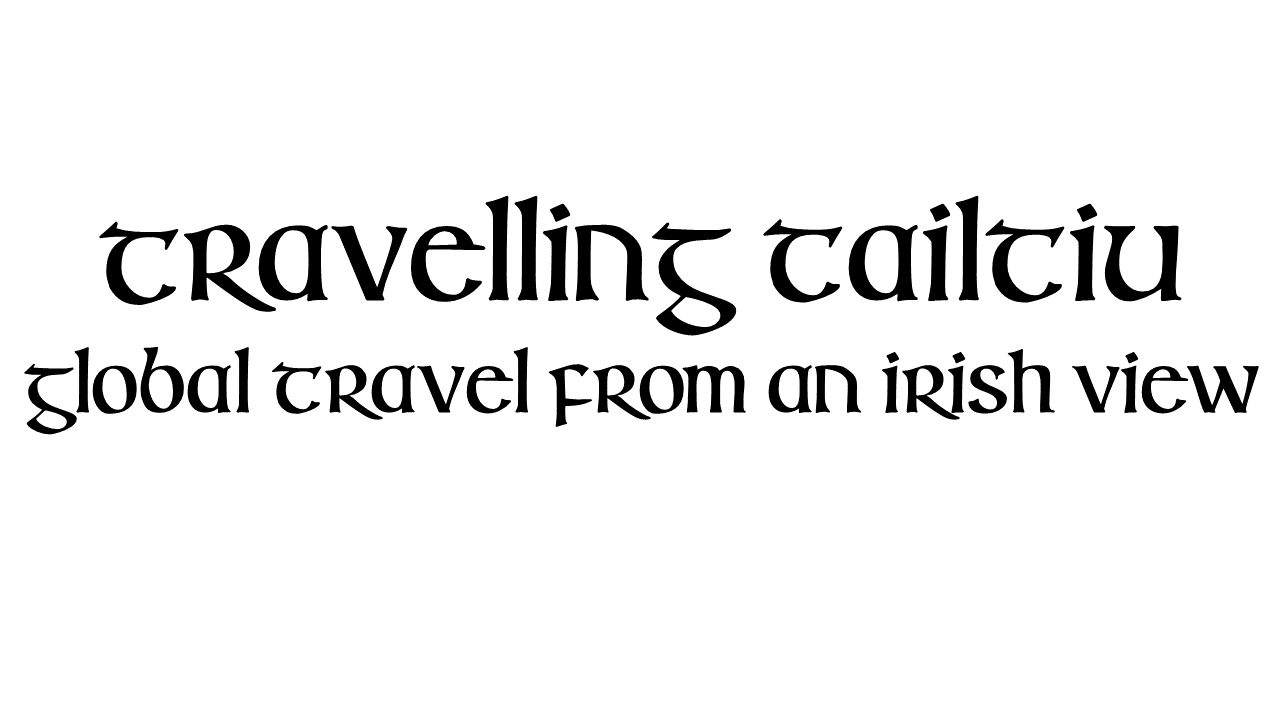The Glens of Antrim.
Going for a run up and down the northeast coast of Ireland.
Ireland's north coast, especially the eastern shores looking over at Scotland, are a treasure, largely undiscovered by tourist hordes. The Glens of Antrim make up this rugged, elevated plateau whose cliffs dramatically sweep down to the sea and the shoreline Coast Road. If you like bus journeys and don't have access to a car, the Translink bus service between Larne and Ballycastle will take you up and down the route.
It is maybe the lack of development in the tourist industry that keeps this part of Ireland so beautiful. In that case, how do you ensure a balance between so-called 'development' and the old or natural world?
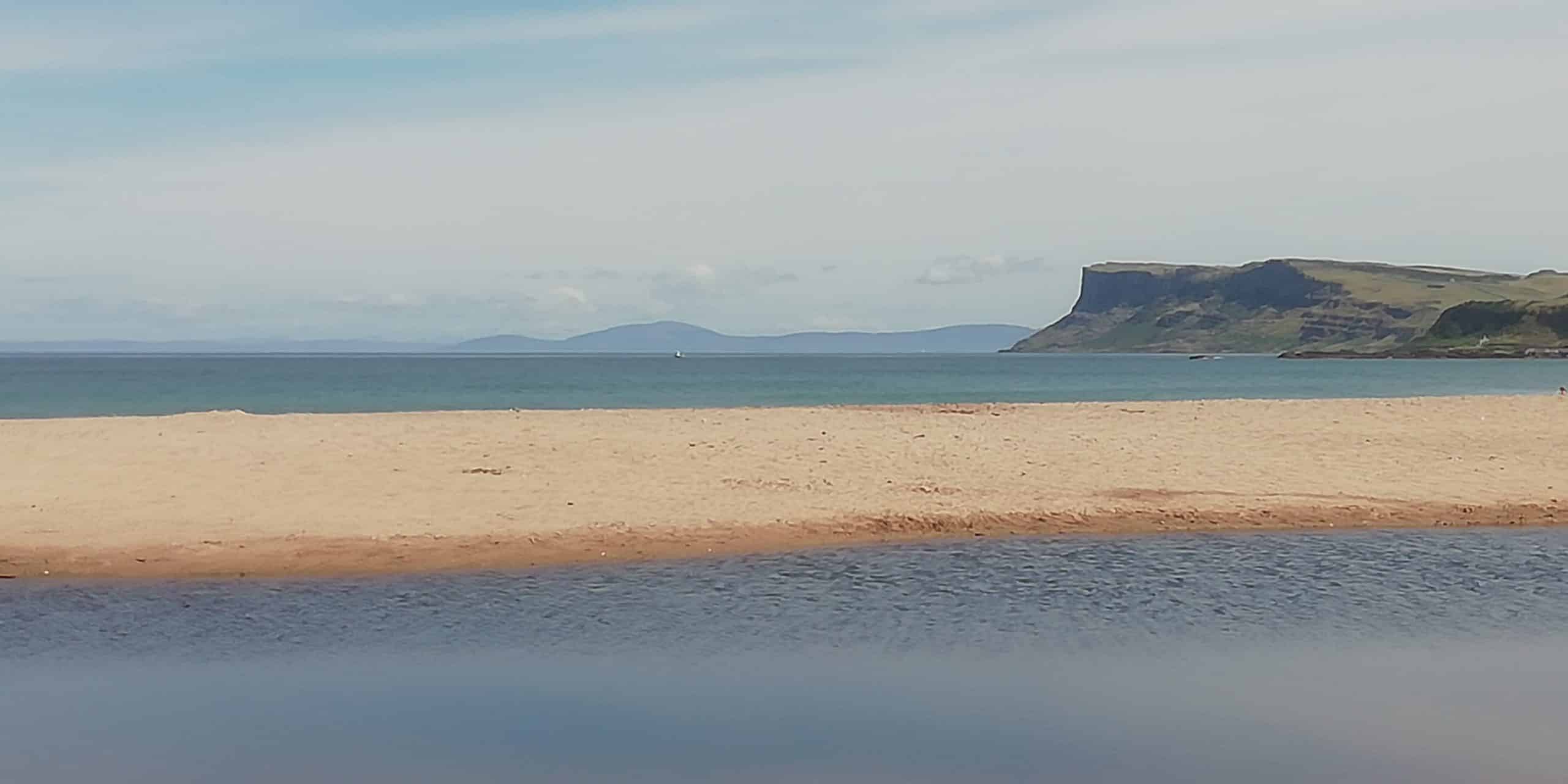
Fairhead, in Ballycastle, and Scotland in the distance, across the Sea of Moyle, in summertime
Where and what are the Glens of Antrim?
As we've said, the Glens of Antrim are on the northeast coast of Ireland at its closest point to Scotland. The Glens link to the Causeway Coast, which is the north coast of County Antrim and follows onto County Derry and the town of Coleraine. You can read more about this section of coastline at this link. However, the two separately-named areas really make up one unbroken stretch of stunningly-scenic coastline.
The northern coastal area is accessible from the city of Belfast by bus or by car, and you can check Belfast out here. Belfast is between 30-60 miles away, depending on your route and point of entry to the area. It is a friendly city and provides a good point of entry to these far-northern areas.
History and Folklore
Fire and ice formed the Glens and the Antrim Plateau, so it seems appropriate that popular HBO series Game of Thrones was partially filmed here. Heavy lava flows covered and moulded the place sometime between 55-60 million years ago. These left a volcanic cap towering over the flat countryside which gradually lowers as it heads inland from high coastal cliffs. This volcanic cap is Slemish mountain, and is supposedly the site of Saint Patrick's enslavement as a young man. He was said to be taken from his homeland by Irish raiders and brought to the area. He spent seven years tending animal flocks before escaping, returning years later to tend flocks of Irish converts to Christianity.
Closer to our time, glaciation sculpted valleys, or glens as the Irish and Scottish call them, during the Ice Ages. Initial fire and subsequent ice have therefore left the area with its distinct shape now.
The Glens' proximity to Scotland has also found its way into its mythology and folklore, and mysticism cloaks the area.
Ancient myth has it that the famous symbol of the northernmost province of Ireland comes from a swimming contest. The red hand of Ulster is a common sight on coats of arms and sporting colours. Two swimming competitors were to swim between Ireland and Scotland, across the Sea of Moyle, which is the ancient name of the straits between the two countries.
Places to see and visit
Given the location, mythology and history of the Glens, there are plenty of places of interest. Added to this, the place is spectacular in terms of scenery.
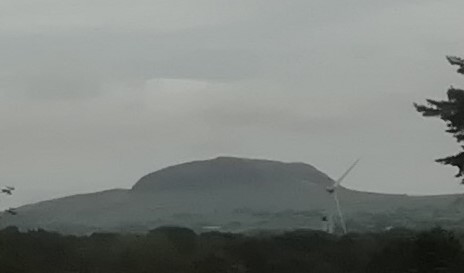
Slemish Mountain in County Antrim
Slemish.
Bordering on the Glens near Ballymena town, Slemish mountain is a typical climb for local pilgrims on Saint Patrick's Day. It is a nice climb, only 190 metres yet quite steep, but the views are spectacular. The reason for this is that Slemish is a sheer mount atop a high plateau. As it is already elevated, its actual height above sea level is 437 metres. Given its position on the high plain, surrounded by flat land gradually sloping inward from the coast, you can see deep inland, as well as towards the sea.
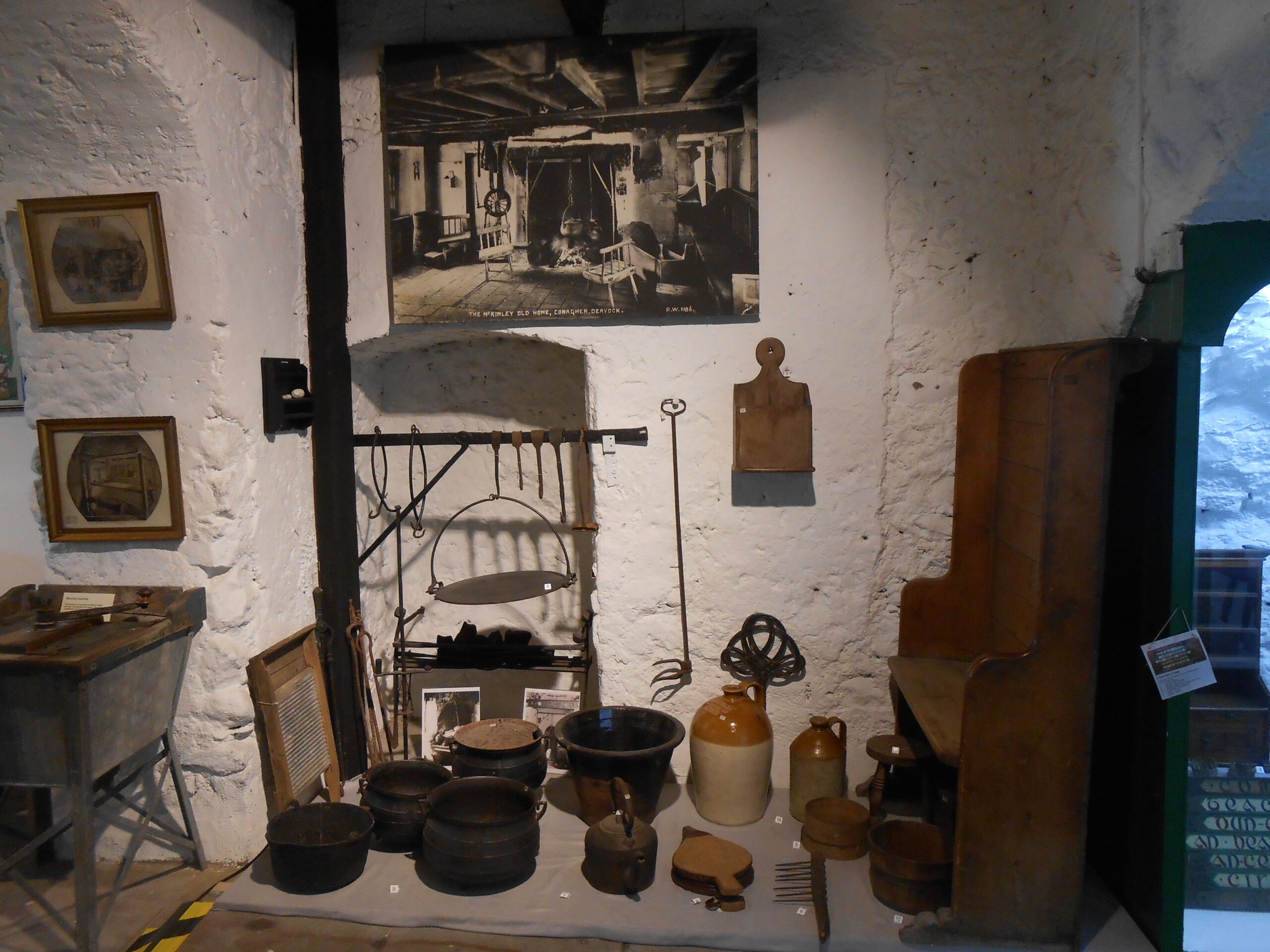
The museum in Ballycastle, an interesting wee spot
Ballycastle.
At the far north of the Glens is Ballycastle. This is a historic resort you can read more about in our articles at this link and also here. Ballycastle is a fantastic wee holiday destination, with a mixture of the seaside, history and some of the oldest pubs in the country. There is at least 250 years of history in at least three local bars, so you can relax in some ancient haunts.
Ballycastle overlooks Scotland's Mull of Kintyre peninsula, so its oversea views of the neighbouring nation are spectacular.
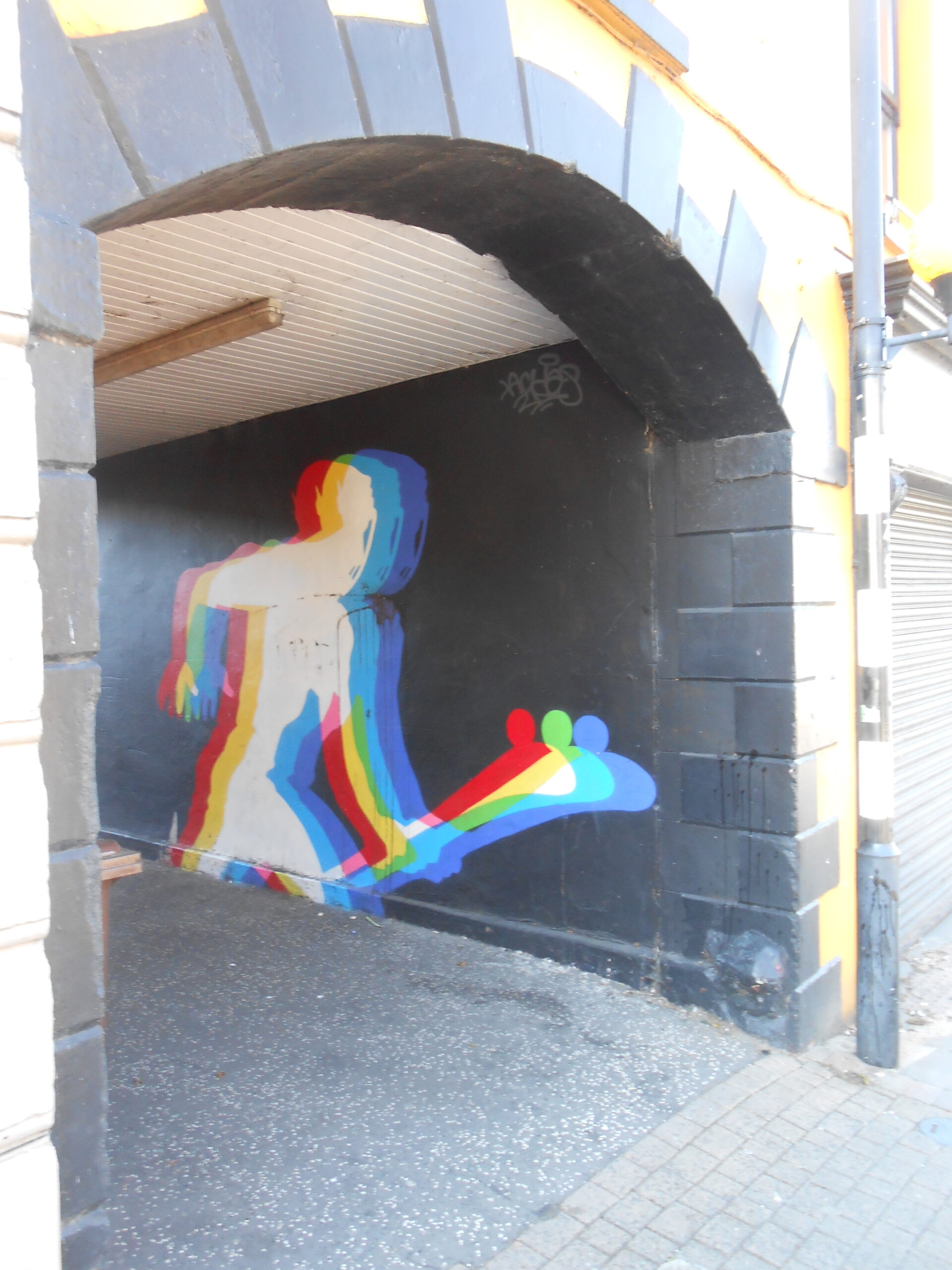
The noble Irish sport of hurling is very popular in the Glens. Here is a mural to the sport in Ballycastle
Cushendun.
Another Game of Thrones location, this is a scenic little village a few miles south of Ballycastle whose surroundings are the closest part of Ireland to Scotland. It is typical of the Glens of Antrim in that the village has a beautiful beach and seems like the last place on Earth, backing onto sea on one side and mountains on the other.
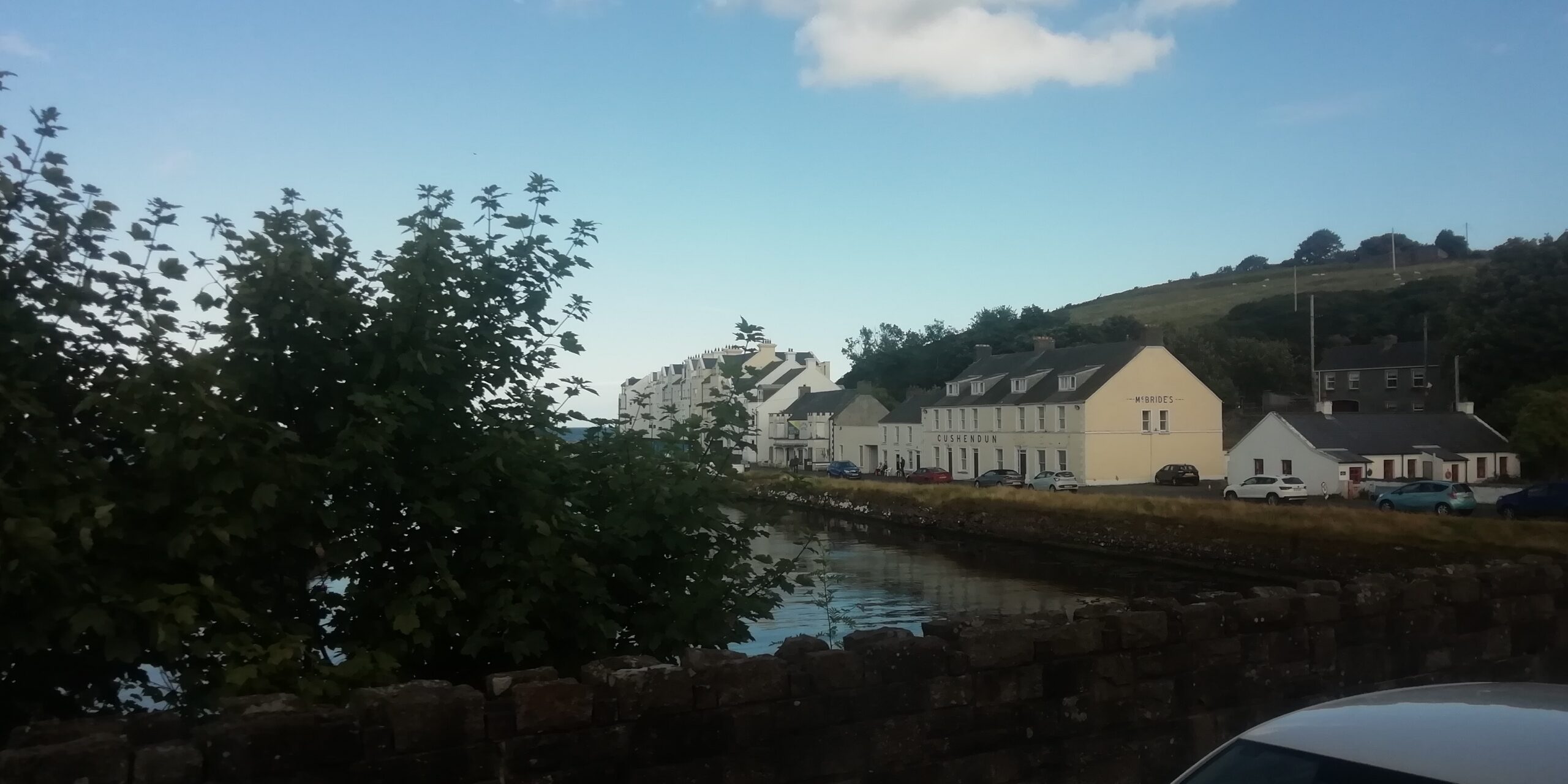
Cushendun; click the image to see full view
Getting about
Transport can get a bit complicated at times as the travel infrastructure is in need of updating, though there is the bus option. Translink have a service between Larne and Ballycastle though you might find yourself wanting to hire a car. There is so much to see and enjoy that you really need the ability to stop and take it all in. The Translink bus service, whose tickets you can check out here, has options for jumping on and off buses. This might make the Glens journey more comfortable for sightseeing, though the bus service tends to stop around 6PM.
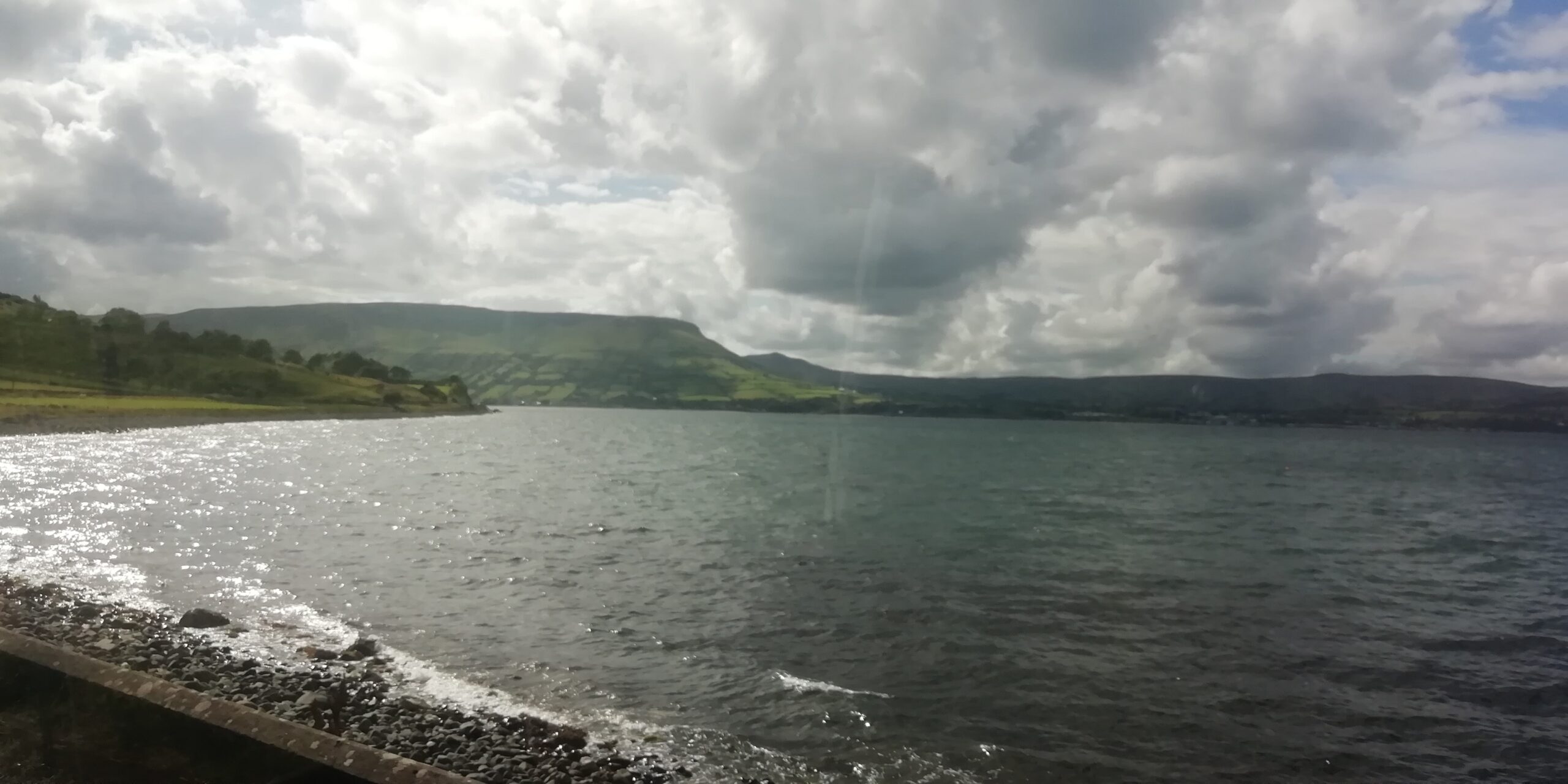
On the Coast Road, looking over at Lurig Mountain, which overlooks the villages of Waterfoot and Cushendall
Why the Glens of Antrim are special
Some local people decry the lack of opportunity (and inability to get planning permission to build houses) in the area. As we've mentioned before, the transport infrastructure leaves something to be desired. However, there are a few transport options, though access to a car is the best option to see the place well.
Nevertheless, this is one of the draws of the Glens of Antrim. It is definitely not an undiscovered territory, yet it has avoided the excesses of mass tourism. This might be put down to the lack of tourist infrastructure but whatever you think, it has helped preserve the place as outstandingly beautiful and peaceful.
This is one of the most complicated issues facing the development of a tourist industry in such an area. Striking the balance between providing economic opportunity while preserving the beauty and unique quality of such scenic areas is a challenge.
Final thoughts
The area is traversed by a coastal road passing cliffs and valleys, and there are a lot of feeder roads going inland up the glens. You would therefore probably be best hiring a car to get the best of the glens.
As a consequence of this logistically-complicated geography, the area is lowly populated, which is invariably connected to its underdevelopment. It keeps the place beautiful but many local families complain that they can't build homes for their children as there are issues with planning permission in areas of outstanding beauty.
Definitely, a good tourist bus system is required and might prove popular with the right promotion. It would be great to see the survival of these communities with the right planning and investment. They are definitely worth visiting and if you want fresh air and beautiful views, it is the place.
